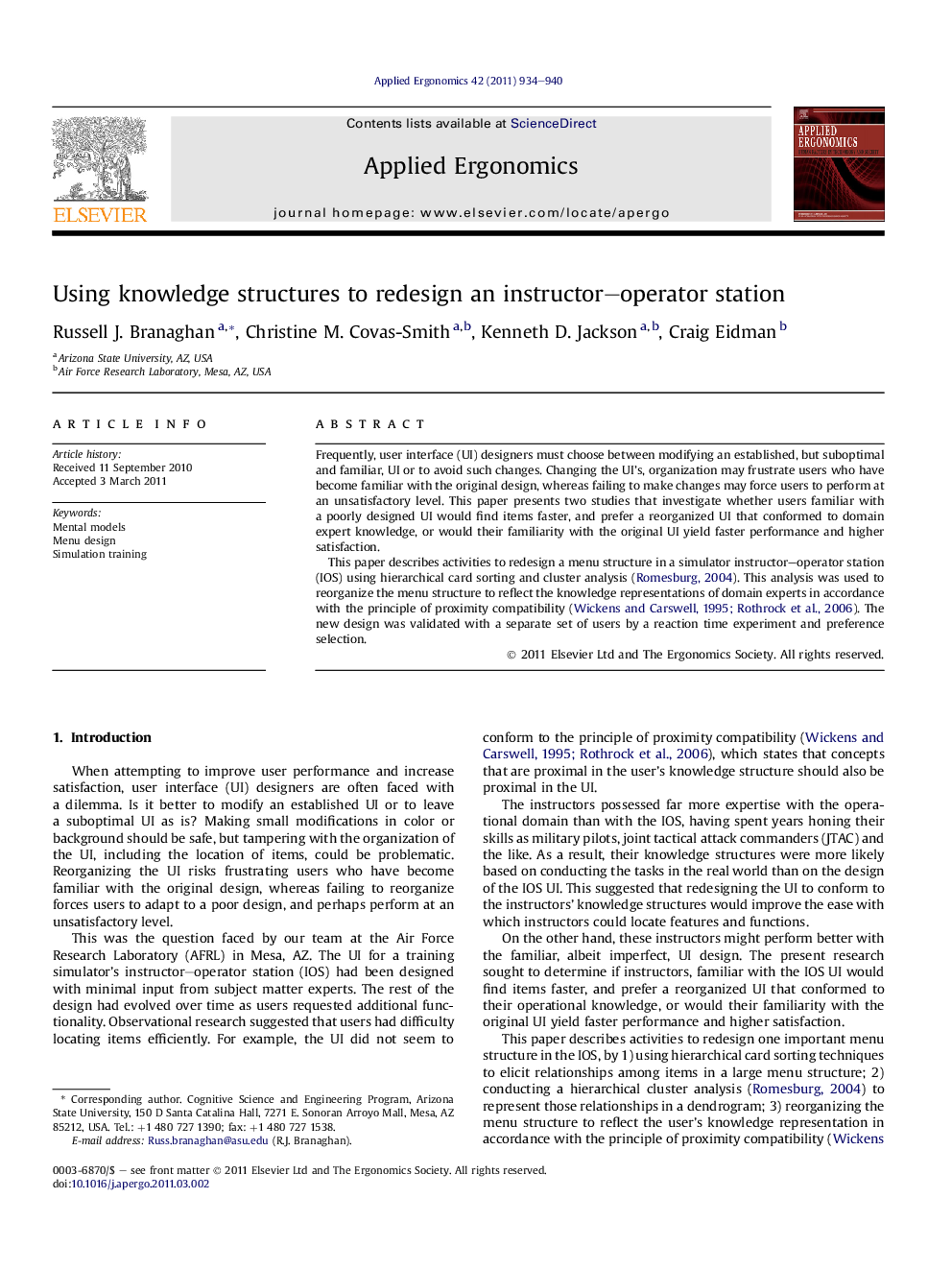| Article ID | Journal | Published Year | Pages | File Type |
|---|---|---|---|---|
| 551229 | Applied Ergonomics | 2011 | 7 Pages |
Frequently, user interface (UI) designers must choose between modifying an established, but suboptimal and familiar, UI or to avoid such changes. Changing the UI’s, organization may frustrate users who have become familiar with the original design, whereas failing to make changes may force users to perform at an unsatisfactory level. This paper presents two studies that investigate whether users familiar with a poorly designed UI would find items faster, and prefer a reorganized UI that conformed to domain expert knowledge, or would their familiarity with the original UI yield faster performance and higher satisfaction.This paper describes activities to redesign a menu structure in a simulator instructor–operator station (IOS) using hierarchical card sorting and cluster analysis (Romesburg, 2004). This analysis was used to reorganize the menu structure to reflect the knowledge representations of domain experts in accordance with the principle of proximity compatibility (Wickens and Carswell, 1995 and Rothrock et al., 2006). The new design was validated with a separate set of users by a reaction time experiment and preference selection.
